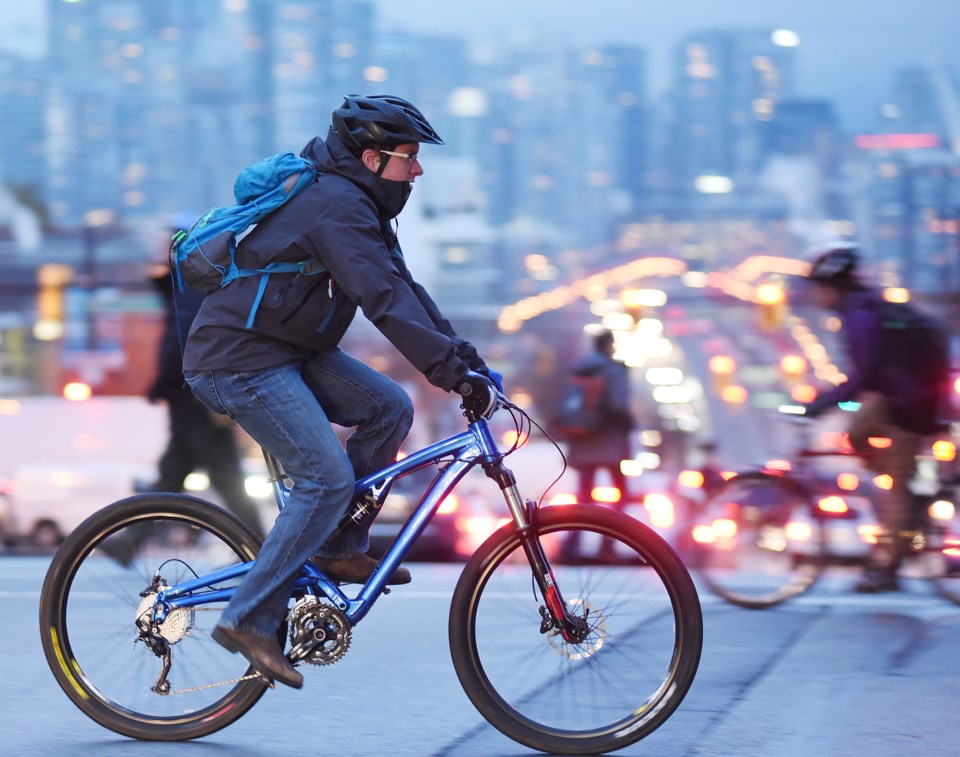I’ve been helping some new commuter cyclists through the onset of winter riding, plying them with all the essential advice.
Such as: find a thin toque to put under your helmet to protect your ears. And: wear good hiking boots, if you have a pair, with ski socks to keep your feet warm. Also: gloves, never leave home without them.
Riding through the winter isn’t impossible, especially in �鶹��ýӳ��where there’s rarely snow or ice to contend with, but it does require a strategic approach to clothing.
My biggest problem in the winter, and one I’ve heard echoed by many fellow cyclists, has always been cold hands. I have terrible circulation, and on the handlebars where there’s nothing to protect your skin from wind, fingers can chill to the bone once the temperature falls past a certain point. Once your hands are truly chilled, it’s hard to be comfortable on a bike even if you’re warm everywhere else.
I tried lobster gloves, which cushion two fingers together, but I found them awkward for gearing and braking and disliked being unable to move my fingers independently. I tried putting hot pockets in my regular gloves, but they only warmed my palms or the back of my hand and didn’t do anything for my poor frozen fingers. I tried really expensive cycling gloves, but they just postponed the deep chill factor briefly.
I figured it was time to try something I’d been considering for a while: heated gloves.
This is not a cheap option. Depending how much you feel the cold and how much you mind being cold, it may not be a route you want to pursue. But for me, it was a game-changer. I wore them through the early December cold snap and for the first time ever, breezed through subzero rides quite happily.
I tried the Chaval XRT Response gloves, which sell for $390 USD. Unlike some models, they don’t have an adjustable temperature gauge but deliver heat based on the temperature of your hands and the air outside the gloves.
I will confess to being a little sceptical to begin with, but the results were near perfect. They provided steady warmth through the fingers and kept my hands from getting cold without overheating once I was warmed up. I used them skiing, and the gloves kept my hands and fingers at an ideal warmth as the temperatures went down to roughly minus-7.
I would caution that these gloves definitely aren’t a slim or trim package — the biggest downside that they are bulky. I still had enough dexterity to work the gears and brakes since the Chaval XRTs were less awkward overall than a lobster glove.
Charging is very easy. Slender interior cables hook together to plug into a wall charger. They’re also simple to turn on and off, thanks to large buttons on the exterior of the glove.
The cost is definitely the biggest downside of this option. But if you weigh that against what you’d pay for gas and downtown parking this winter, pricy heated gloves that work for you are worth it if they make the difference between riding and not riding.
Kay Cahill is a cyclist and librarian who believes bikes are for life, not just for commuting. Reach her at [email protected].



